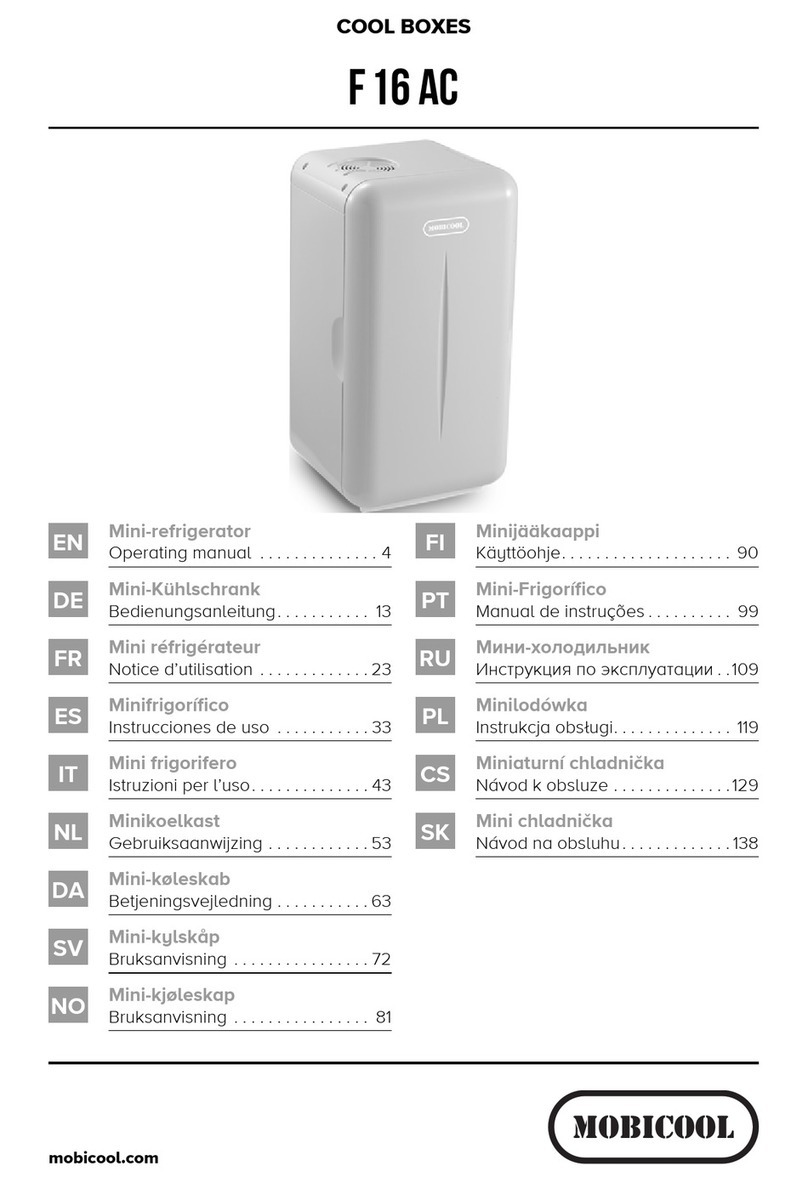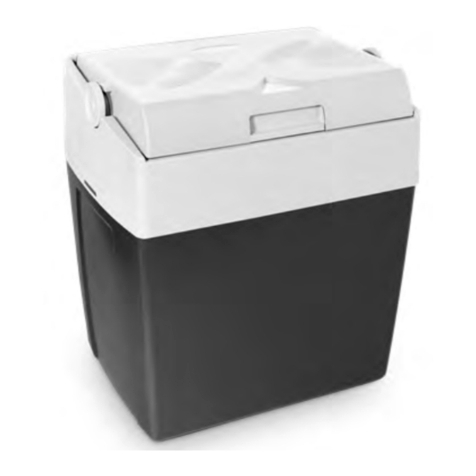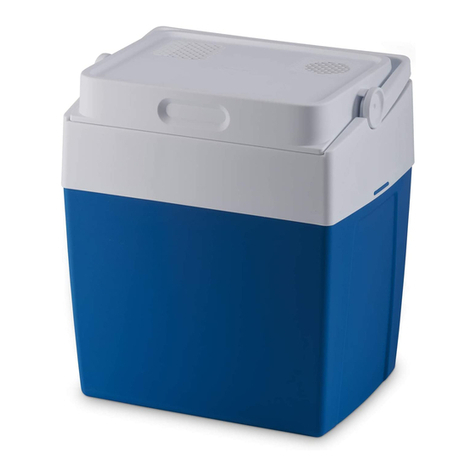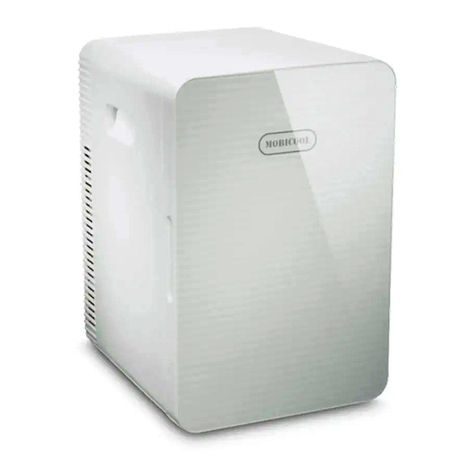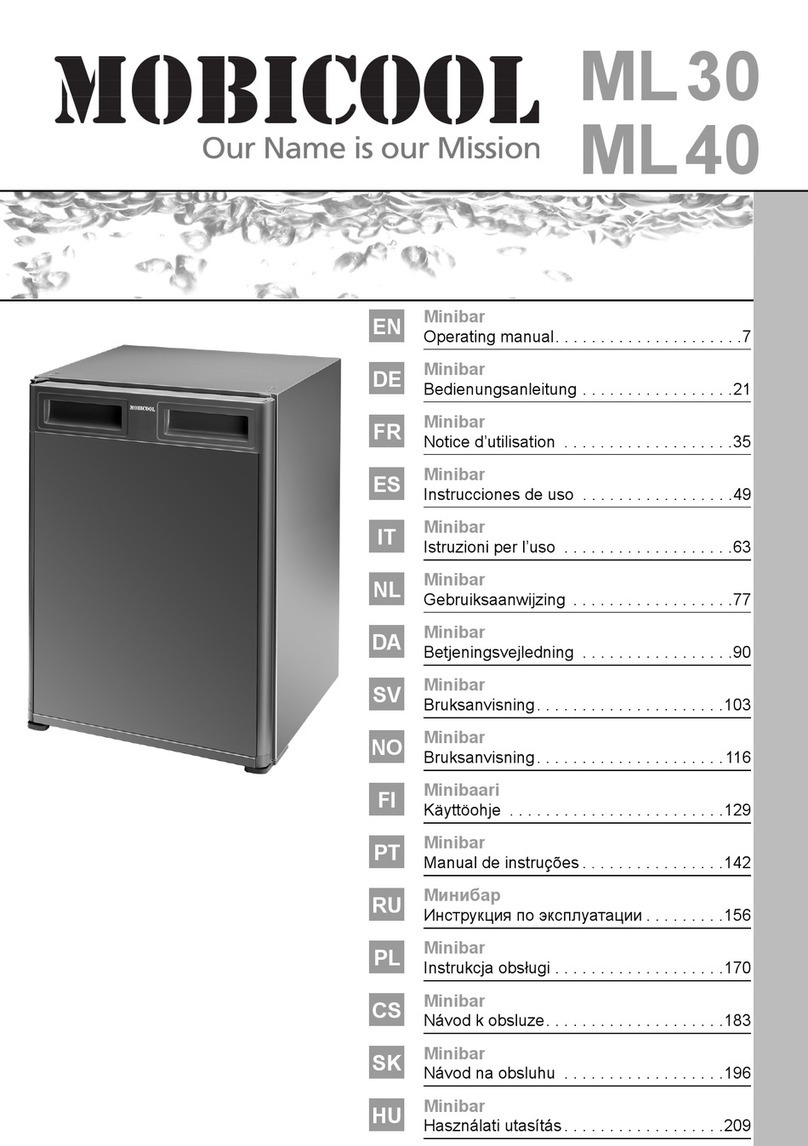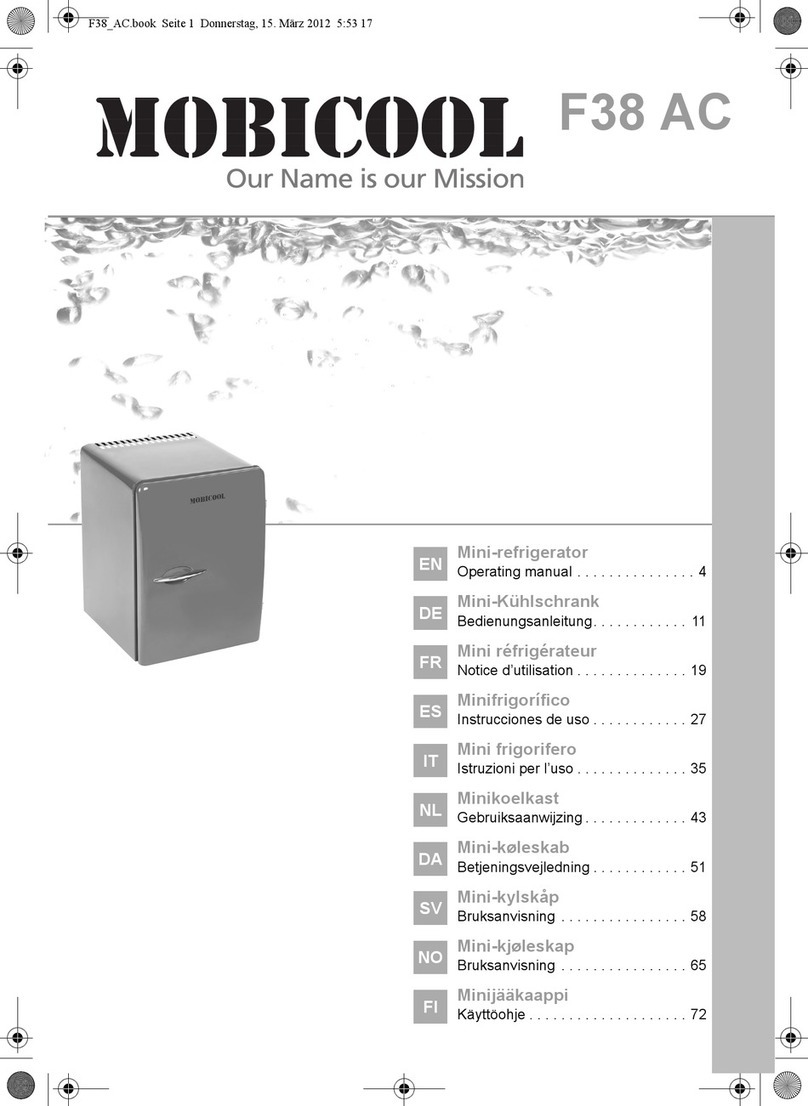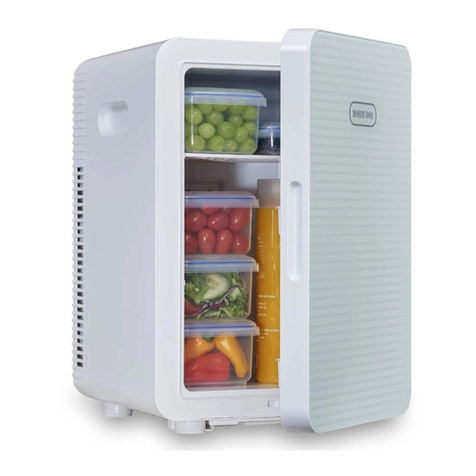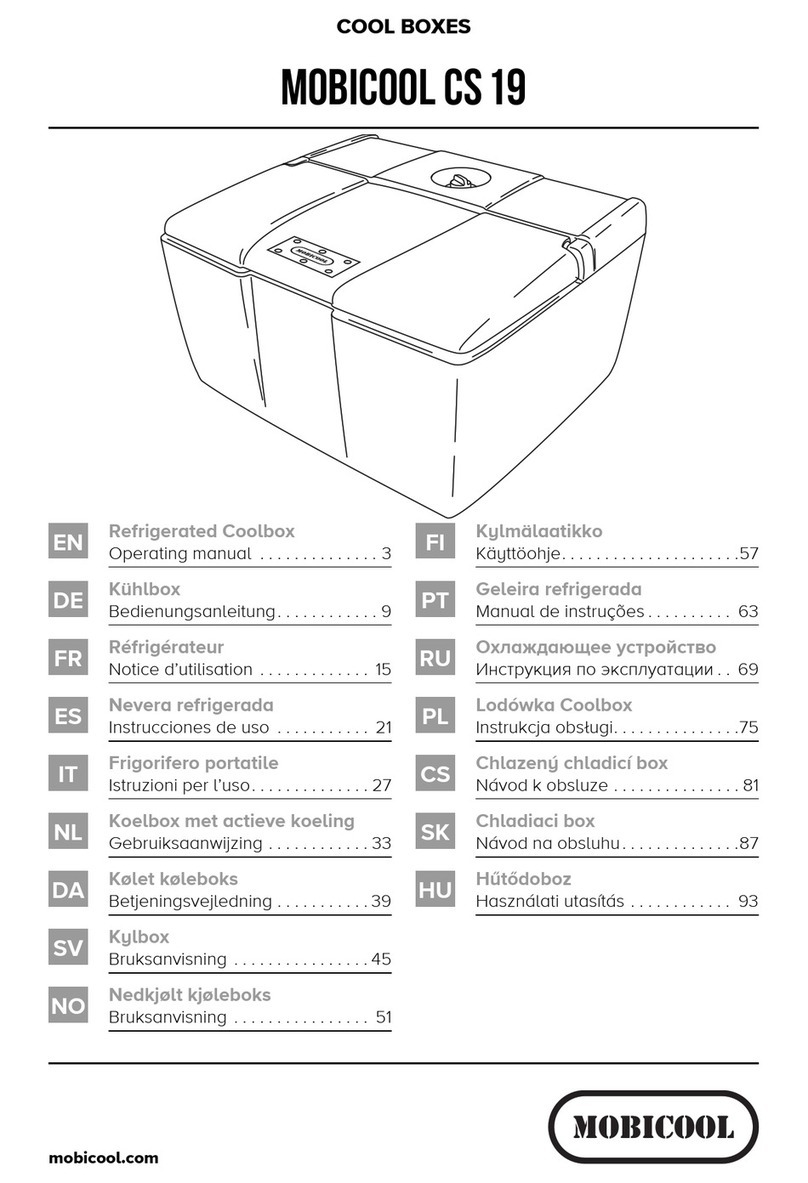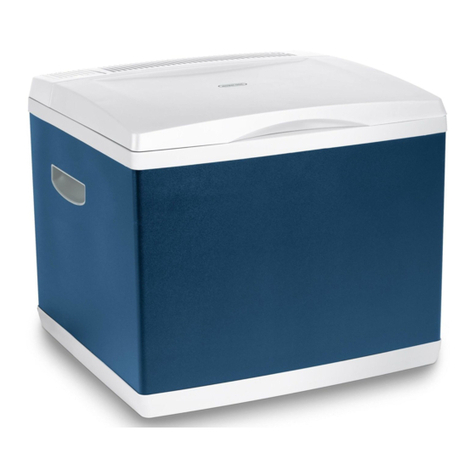F15 Intended use
7
ANOTICE!
Do not use electrical devices inside the cooler unless they are
recommended by the manufacturer for the purpose.
Do not place the device near naked flames or other heat
sources (heaters, direct sunlight, gas ovens etc.).
Danger of overheating!
Ensure at all times that there is sufficient ventilation so that the
heat that arises during operation does not build up. Make sure
that the device is sufficiently far away from walls and other
objects so that the air can circulate.
Ensure that the ventilation openings are not covered.
Do not fill the inner container with ice or fluid.
Never immerse the device in water.
Protect the device and the cable against heat and moisture.
3 Intended use
The device has been designed for use with a 12 Vgon-board power supply
socket of a car (cigarette lighter), boat or caravan.
The device can also be connected to a 220–240 Vwmains supply.
The device can be used to cool and keep foodstuffs warm. It is possible to
change between the heating and cooling operation by means of a switch.
The device is intended to be used in household and similar applications such
as
staff kitchen areas in shops, offices and other working environments
farm houses
clients in hotels, motels and other residential type environments
bed and breakfast type environments
catering and similar non-retail applications
The device may also be used for camping use. The device shall not to be
exposed to rain.
!CAUTION! Health hazard!
Please check if the cooling capacity of the device is suitable for
storing the food or medicine you wish to cool.

